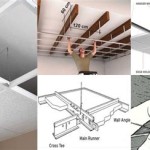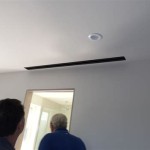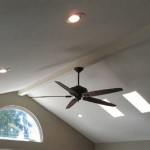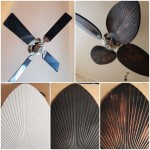How To Install Pendant Light Ceiling Hooks
Installing pendant lights can dramatically transform the ambiance of a room, providing focused illumination and adding a touch of style. Securing these lights safely and effectively often involves using ceiling hooks. This article provides a comprehensive guide on how to install ceiling hooks for pendant lights, covering various hook types, installation techniques, and safety considerations.
Understanding Different Types of Ceiling Hooks
The selection of the appropriate ceiling hook is crucial for the safety and stability of the pendant light. Different types of hooks are designed for varying weight capacities and ceiling materials. Understanding these distinctions is paramount before commencing installation.
Screw-in Hooks: These are arguably the most common type of ceiling hook. They feature a threaded shank that screws directly into the ceiling material. Screw-in hooks are best suited for solid wood joists or when used with appropriate anchors in drywall or plaster. The holding power of a screw-in hook depends significantly on the depth and integrity of the screw threads within the ceiling material.
Toggle Bolt Hooks: Toggle bolt hooks are designed for hollow ceiling materials like drywall or plasterboard. They consist of a hook attached to a bolt and a spring-loaded toggle wing. The toggle wing is inserted through a pre-drilled hole in the ceiling, and once it clears the other side, the spring expands the wings. Tightening the bolt pulls the wings tight against the back of the ceiling, providing a secure anchor. Toggle bolts offer superior holding power compared to screw-in hooks when used in hollow ceilings.
Adhesive Hooks: These hooks rely on a strong adhesive to bond to the ceiling surface. They are typically designed for lightweight pendant lights and are best suited for smooth, non-porous surfaces. Adhesive hooks are easy to install but may not be suitable for heavier fixtures or ceilings that experience temperature fluctuations or high humidity. The weight rating should always be carefully observed to prevent the light from falling.
Swag Hooks: Swag hooks are specifically designed for hanging pendant lights and concealing the electrical cord. They often feature a decorative design and can be used with screw-in or toggle bolt mechanisms, depending on the ceiling material. Swag hooks provide both functional support and aesthetic appeal.
Heavy-Duty Hooks: For heavier pendant lights exceeding the weight capacity of standard hooks, heavy-duty options are available. These hooks are typically made of thicker steel and often require specialized installation techniques, such as anchoring directly into ceiling joists or using multiple mounting points for increased stability.
Preparing for Installation
Before commencing any installation, meticulous preparation is necessary to ensure a safe and successful outcome. This involves gathering the necessary tools, identifying the ceiling material, and taking appropriate safety precautions.
Gathering the Necessary Tools: The specific tools required will vary depending on the type of hook being installed and the ceiling material. However, a basic toolkit should include: a drill with various drill bits (including a masonry bit if necessary), a screwdriver (both Phillips head and flathead), a stud finder, a level, a measuring tape, a pencil, safety glasses, and work gloves. Wire strippers and electrical tape are also essential for handling electrical wiring.
Identifying the Ceiling Material: Determining the composition of the ceiling is crucial for selecting the appropriate type of hook and installation method. Common ceiling materials include drywall, plaster, wood, and concrete. Drywall is easily identifiable as a relatively soft material that readily accepts screws and nails. Plaster is a denser material that may require pre-drilling. Wood ceilings will typically consist of exposed beams or wooden planks. Concrete ceilings will require specialized anchors and drilling techniques.
Safety Precautions: Safety should be the top priority during any electrical or home improvement project. Always turn off the power to the circuit at the breaker box before commencing any wiring or drilling. Use a non-contact voltage tester to verify that the power is indeed off. Wear safety glasses to protect the eyes from debris and work gloves to protect the hands. If working at heights, use a stable ladder and ensure that it is properly positioned.
Weight Considerations: The weight of the pendant light is a critical factor in selecting the appropriate ceiling hook. Always consult the manufacturer's specifications for the weight of the fixture. Choose a hook with a weight rating that significantly exceeds the weight of the light. Overestimating the weight capacity is always preferable to underestimating it. Consider the dynamic load, which is the force exerted on the hook when the light is moved or bumped. This further emphasizes the need for a safety margin in the weight rating.
Step-by-Step Installation Guide
The installation process will vary depending on the type of hook being used and the ceiling material. The following provides detailed instructions for installing common types of ceiling hooks.
Installing Screw-in Hooks into Wood Joists:
1. Use a stud finder to locate the ceiling joists. These are typically spaced 16 or 24 inches apart.
2. Mark the desired location for the hook on the joist.
3. Pre-drill a pilot hole slightly smaller than the diameter of the screw shank to prevent the wood from splitting. The pilot hole should be deep enough to accommodate the full length of the screw.
4. Screw the hook into the pilot hole, turning it clockwise until it is securely seated. Avoid over-tightening, which can strip the threads or damage the wood.
5. Test the stability of the hook by gently pulling on it. It should feel solid and not wobble.
Installing Toggle Bolt Hooks into Drywall or Plaster:
1. Mark the desired location for the hook on the ceiling.
2. Drill a hole through the drywall or plaster large enough to accommodate the toggle wings (typically 1/2 inch to 5/8 inch).
3. Thread the bolt through the hook and attach the toggle wings.
4. Fold the toggle wings inward and insert them through the hole in the ceiling.
5. Once the toggle wings have cleared the other side of the ceiling, they will spring open. Gently pull back on the bolt to ensure that the wings are properly engaged.
6. Tighten the bolt until the hook is securely fastened to the ceiling. Avoid over-tightening, which can crush the drywall or plaster.
Installing Adhesive Hooks:
1. Clean the ceiling surface with a damp cloth and allow it to dry completely.
2. Peel off the backing from the adhesive strip on the hook.
3. Carefully position the hook on the desired location on the ceiling.
4. Press firmly on the hook for the recommended amount of time (usually 30-60 seconds) to ensure a strong bond.
5. Allow the adhesive to cure for the recommended time (usually 24-48 hours) before hanging the pendant light.
Wiring the Pendant Light:
1. Ensure the power to the circuit is turned off at the breaker box.
2. Connect the pendant light's wires to the corresponding wires in the ceiling junction box. Typically, black (hot) wires connect to black wires, white (neutral) wires connect to white wires, and green (ground) wires connect to green or bare copper wires.
3. Use wire connectors (wire nuts) to securely join the wires. Twist the connectors clockwise until they are tight.
4. Wrap electrical tape around the wire connectors for added insulation and security.
5. Carefully tuck the wires back into the junction box.
6. Attach the pendant light's canopy to the ceiling, concealing the junction box.
Hanging the Pendant Light:
1. Carefully hang the pendant light from the installed ceiling hook.
2. Adjust the length of the pendant light's cord or chain to the desired height.
3. Ensure that the pendant light is level. If necessary, make adjustments to the hook or the hanging mechanism.
4. Turn the power back on at the breaker box.
5. Test the pendant light to ensure that it is working properly.
Troubleshooting Common Issues
Despite careful planning and execution, unforeseen issues may arise during the installation process. Understanding potential problems and their solutions can help ensure a successful outcome.
Hook Not Holding: If the hook feels loose or unstable, it may not be properly anchored in the ceiling material. For screw-in hooks, try using a longer screw or a different type of anchor. For toggle bolt hooks, ensure that the toggle wings are fully engaged and that the bolt is properly tightened. If the hook is still not holding, consider using a heavier-duty hook or relocating the mounting point to a stronger area of the ceiling.
Difficulty Drilling: Drilling through hard materials like plaster or concrete may require a hammer drill and a masonry drill bit. Start with a small pilot hole and gradually increase the size of the bit as needed. Apply steady pressure and avoid forcing the drill, which can damage the bit or the ceiling material.
Wiring Problems: If the pendant light does not turn on after installation, double-check the wiring connections. Ensure that all wires are properly connected, that the wire connectors are tight, and that there are no loose or exposed wires. If the problem persists, consult a qualified electrician.
Cord Length Issues: If the pendant light cord is too long, it can be shortened by carefully cutting it to the desired length and re-attaching the end connectors. If the cord is too short, it may be possible to extend it using a cord extension kit. Ensure that the extension cord is rated for the appropriate voltage and amperage.
Aesthetic Considerations: If the installed hook is visible and aesthetically unappealing, consider using a decorative hook or a swag hook to conceal it. Alternatively, the hook can be painted to match the ceiling color. Pay attention to the alignment of the pendant light and ensure that it is centered in the desired location.

How To Install Ceiling Light Fixtures New Replacement Pendant Lighting

How To Center An Off Ceiling Light Without Moving The Junction Box Grit And Polish

How To Hang A Hook From The Ceiling With Pictures

How To Center An Off Ceiling Light Without Moving The Junction Box Grit And Polish

Hang Pendant Light With Loop Home Improvement Stack Exchange

Ceiling Ring Hook For Plug Or Swag Pendants Silver Nickel Chrome Pendant Light Fixture Large Lighting

Easy Ceiling Hook Black Brighttia

Pendant Lamps 5 Steps Instructables

How To Swag A Light Fixture With Cord Or Chain Lightlady Studio

Swag Hook For Chandelier And Pendant Light Cord Management Modern Ceiling Wall Keeper Hanging Lights Plants Easy Hooks
Related Posts








